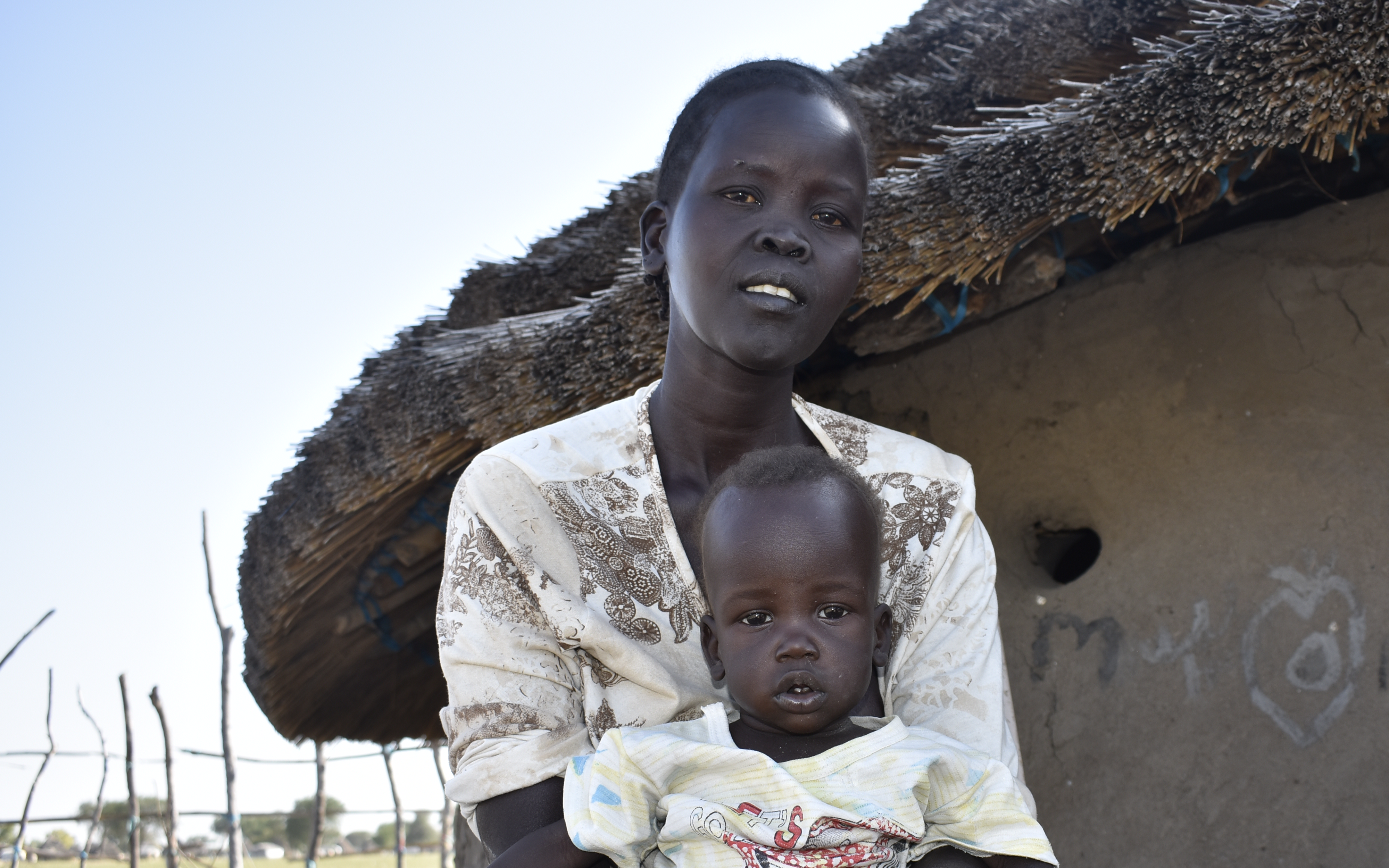Risks for children under five Without enough nutritious food to eat or the ability to absorb the right nutrients, children under five are at high risk of acute malnutrition which in turn can cause stunting, impede mental and physical development, increase the risk of developing other illnesses and ultimately cause death.
An estimated 11 million children under five are facing extreme hunger or starvation across eleven countries in Africa, the Caribbean, Middle East and Asia, new analysis by Save the Children reveals, with the potential risk of famine in Yemen and South Sudan. The aid agency is calling for an urgent and large-scale global response to help avert a humanitarian catastrophe.
THE STORY OF AKER AND HER DAUGHTER ADHAR FROM SOUTHERN SUDAN
38-year-old Aker from Abyei in South Sudan often has nothing to feed her three children. Her 8-month old daughter Adhar* was suffering from severe malnutrition. There are no proper health facilities to treat Adhar* where they live, and so mother and daughter had to travel over 60 kilometres on foot to reach the nearest clinic.

Aker* said: “Most of the time the money I earn isn’t enough to buy food to feed my children and they go hungry. My daughter started to deteriorate because she wasn’t being fed enough. She began to lose weight and went for three days without food. And because I didn’t have enough to eat my body could not generate enough breast milk to feed her. I have no food at home to feed my children because of a poor harvest due to drought in 2019 and then flooding in 2020.”